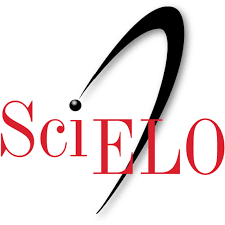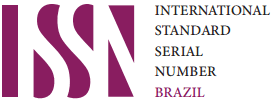Evaluation of light transmission and uniformity of hardening of resin cements as a function of simulated indirect restoration thickness
DOI:
https://doi.org/10.4322/bds.2025.e4815Abstract
Objective: This study evaluated how the thickness of a simulated indirect restoration influences the light transmission of curing units and the uniformity of dual-cure resin cement polymerization using two light sources. (VALO – ULTRADENT and RADII-CAL – SDI). Material and Methods: Sixty A2-shade resin composite discs (GrandioSo, VOCO GmbH), 12 mm in diameter, were fabricated and divided into three experimental groups by thickness: 1.5 mm, 2.5 mm, and 3.5 mm (n = 10 per group). For irradiance transmission, light passage through each disc was measured using a radiometer (ECEL RD-7). The same discs were used in an indirect restoration simulation (SRI), employing a 3D-printed mold with 0.3 mm lateral barriers to ensure uniform cement thickness. Dual-cure resin cement (Bifix QM Universal, VOCO GmbH) was applied, and light-curing was performed for 60 seconds with each light source. After 24 hours, Knoop microhardness was assessed in three regions of the cement: central, intermediate, and peripheral region. Light transmission was analyzed by two-way ANOVA, while cement microhardness was assessed by three-way ANOVA, followed by Tukey’s post-hoc test (α=0.05). Results: Light transmission was undetectable through 3.5 mm specimens, indicating increased attenuation with thickness. VALO showed higher irradiance (67.6 ± 9.69 mW/cm2) than RADII-CAL (57.3 ± 13.82 mW/cm2). Cement microhardness decreased as restoration thickness increased, with the highest value at 1.5 mm using VALO (75.4 ± 8.43). Thickness also influenced hardening uniformity, with the highest regional value observed in the center of 1.5 mm specimens (81.5 ± 6.49). Conclusion: We can conclude that thickness directly influences the hardening of dual-cure resin cement, as it is affected by the light attenuation occurring through the indirect restorative material.
KEYWORDS
Cementation; Dental materials; Polymerization; Prosthodontics; Resin cements.
Downloads
Downloads
Published
How to Cite
Issue
Section
License
Copyright (c) 2025 Luana dos Santos Souza, Sandy Vitória dos Santos Osório, Maria Fernanda Monnerat, Taciana Marco Ferraz Caneppele, Eduardo Bresciani

This work is licensed under a Creative Commons Attribution 4.0 International License.
Brazilian Dental Science uses the Creative Commons (CC-BY 4.0) license, thus preserving the integrity of articles in an open access environment. The journal allows the author to retain publishing rights without restrictions.
=================




























